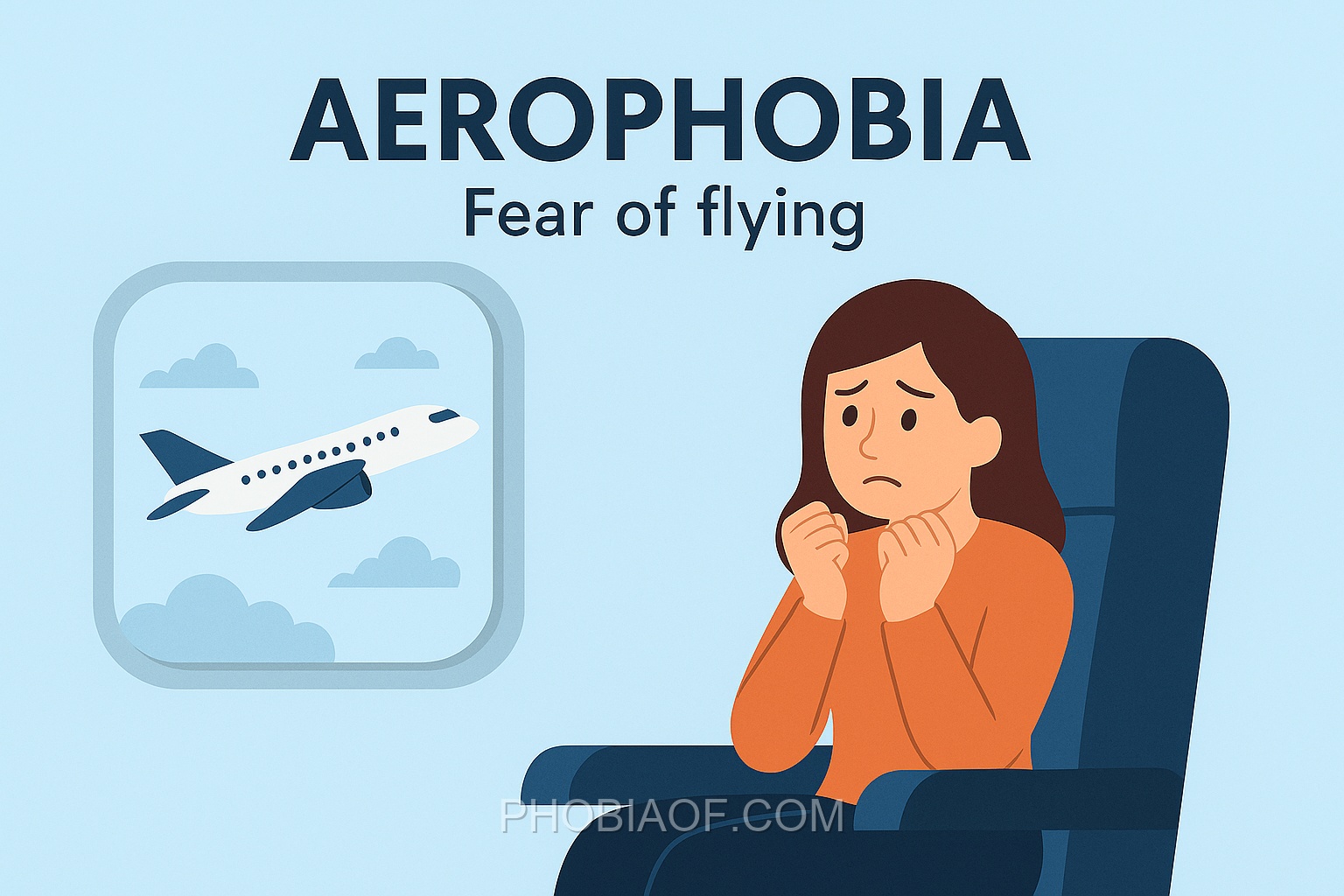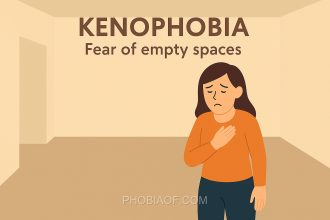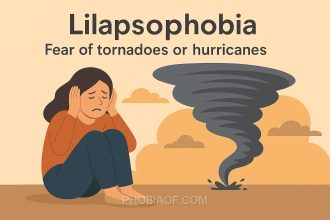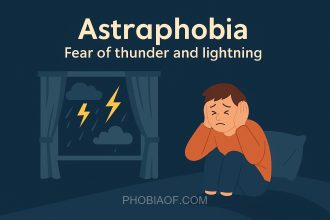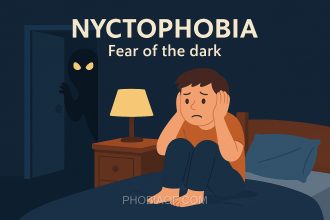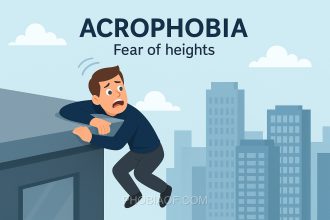Have you ever felt your heart race at the mere thought of boarding an airplane? If so, you might be familiar with Aerophobia, a common fear that can make the idea of flying feel overwhelming.
Aerophobia, derived from the Greek words “aero,” meaning air, and “phobos,” meaning fear, is the intense fear of flying. This phobia affects many people globally, making air travel a daunting experience rather than an exciting adventure.
For those who suffer from Aerophobia, the fear can manifest in various ways, impacting their physical and emotional well-being.
Here are some common effects:
- Increased heart rate and anxiety before and during flights
- Persistent worry leading up to travel
- Difficulty in sleeping or concentrating due to fear
- In extreme cases, avoidance of air travel altogether, which can limit personal and professional opportunities
Understanding Aerophobia is the first step toward managing it. With the right strategies and support, individuals can learn to navigate their fear and eventually embrace the skies with confidence.
Causes of Aerophobia
Aerophobia, or the fear of flying, is a common phobia that can significantly affect a person’s life. Understanding its causes can help in managing and overcoming this fear. Several factors can contribute to the development of aerophobia, and they often interact in complex ways.
- Genetic Predisposition:
Some individuals may have a genetic tendency towards anxiety and related disorders, which can include phobias like aerophobia. A family history of anxiety or phobias might increase the likelihood of developing similar fears.
- Traumatic Experiences:
Experiencing or witnessing a traumatic event related to flying, such as severe turbulence or an emergency landing, can lead to a lasting fear of flying. Even hearing about such events can sometimes trigger this phobia.
- Learned Behavior:
Observing others who are afraid of flying can influence an individual’s own feelings about flying. If a person grows up around family members or friends who express fear of flying, they may adopt similar fears.
- Psychological Factors:
Existing anxiety disorders or a general tendency to worry can contribute to the development of aerophobia. Fear of losing control or feeling trapped may also play a role.
- Environmental Factors:
Media reports of plane crashes or disasters can heighten fear, even if flying is statistically safe. The sensational nature of such reports can make the danger feel more immediate and personal.
Interestingly, some research suggests that the fear of flying might be linked to other fears, such as the fear of heights or claustrophobia. Understanding the specific triggers for an individual can be crucial in addressing and treating aerophobia effectively.
Symptoms of Aerophobia
Aerophobia, or the fear of flying, is characterized by intense fear or anxiety when thinking about or experiencing situations related to flying. This phobia can manifest in various ways, affecting both the mind and body. Understanding these symptoms can help individuals recognize the condition in themselves or others.
- Intense Fear or Anxiety: Individuals with aerophobia often experience overwhelming fear at the thought of flying, which can escalate as a flight approaches.
- Panic Attacks: Sudden and intense episodes of fear that may include symptoms such as shortness of breath, dizziness, or a feeling of losing control.
- Rapid Heartbeat: The heart may race or pound, especially when thinking about flying or while on a plane.
- Sweating: Excessive perspiration, particularly in situations related to flying, is common.
- Nausea or Upset Stomach: Feelings of nausea or gastrointestinal distress can occur when faced with the prospect of flying.
- Trembling or Shaking: The body may physically shake in response to the fear of flying, indicating high levels of anxiety.
- Emotional Distress: Feelings of dread or apprehension can be overwhelming, leading to significant emotional discomfort.
- Avoidance of Triggers: Affected individuals may go to great lengths to avoid flying, including altering travel plans or missing important events.
When severe, these symptoms can significantly interfere with daily life, limiting personal and professional opportunities and affecting overall well-being.
Treatment for Fear of Flying
Overcoming the fear of flying, known as Aerophobia, is entirely possible with the right approach and support. It’s important to understand that this phobia can be treated and managed over time, allowing you to travel with greater ease and confidence. Let’s explore the treatment options and coping strategies that can help you overcome this fear.
Proven Therapies
- Exposure Therapy: This approach involves gradually facing the fear in a controlled and safe manner. By incrementally exposing yourself to flying-related situations, such as watching videos of flights or visiting an airport, you can desensitize yourself to the anxiety triggers over time.
- Cognitive-Behavioral Therapy (CBT): CBT is a highly effective therapy that aims to change your fearful thoughts and beliefs about flying. By recognizing and altering negative thought patterns, you can reduce anxiety and build a more positive outlook on flying.
- Counseling: Speaking with a therapist or counselor can help you explore the root causes of your fear and develop personalized strategies to manage it. Counseling provides a supportive environment to express your concerns and receive expert guidance.
Self-Help Coping Techniques
- Relaxation Exercises: Practicing deep breathing, progressive muscle relaxation, or guided imagery can help calm your mind and body before and during a flight.
- Meditation: Regular meditation practice can increase your overall sense of calm and equip you with tools to manage anxiety when it arises.
- Support Groups: Joining a support group allows you to connect with others who share similar fears. Sharing experiences and coping strategies can provide encouragement and reduce feelings of isolation.
Medication
In some severe cases, medication such as anti-anxiety drugs may be prescribed by a healthcare provider to help manage symptoms. However, the focus should ideally be on therapy and developing coping skills to ensure long-term improvement.
Remember, seeking professional help is a positive step toward overcoming your fear of flying. If this phobia is interfering with your life, don’t hesitate to reach out to a mental health professional. With time, patience, and the right support, you can conquer your fear and enjoy the freedom of flying.
Conclusion
Understanding the causes and symptoms of aerophobia is a crucial step toward overcoming this challenging fear. By recognizing what triggers anxiety and acknowledging the physical and emotional responses associated with flying, individuals can begin to take control of their phobia. This awareness not only empowers those affected to confront their fears but also opens the door to effective coping strategies.
It is important to remember that many people successfully manage or even overcome their fear of flying with time and the right support. Seeking professional help, such as therapy or consulting a doctor, can be an invaluable step in this journey. These resources can provide personalized strategies and guidance, offering reassurance and building confidence in tackling aerophobia.
Remember, you are not alone in this journey. With patience, understanding, and the right support, overcoming the fear of flying is entirely possible. Embrace the opportunity to seek help and move toward a more liberated experience of travel.
